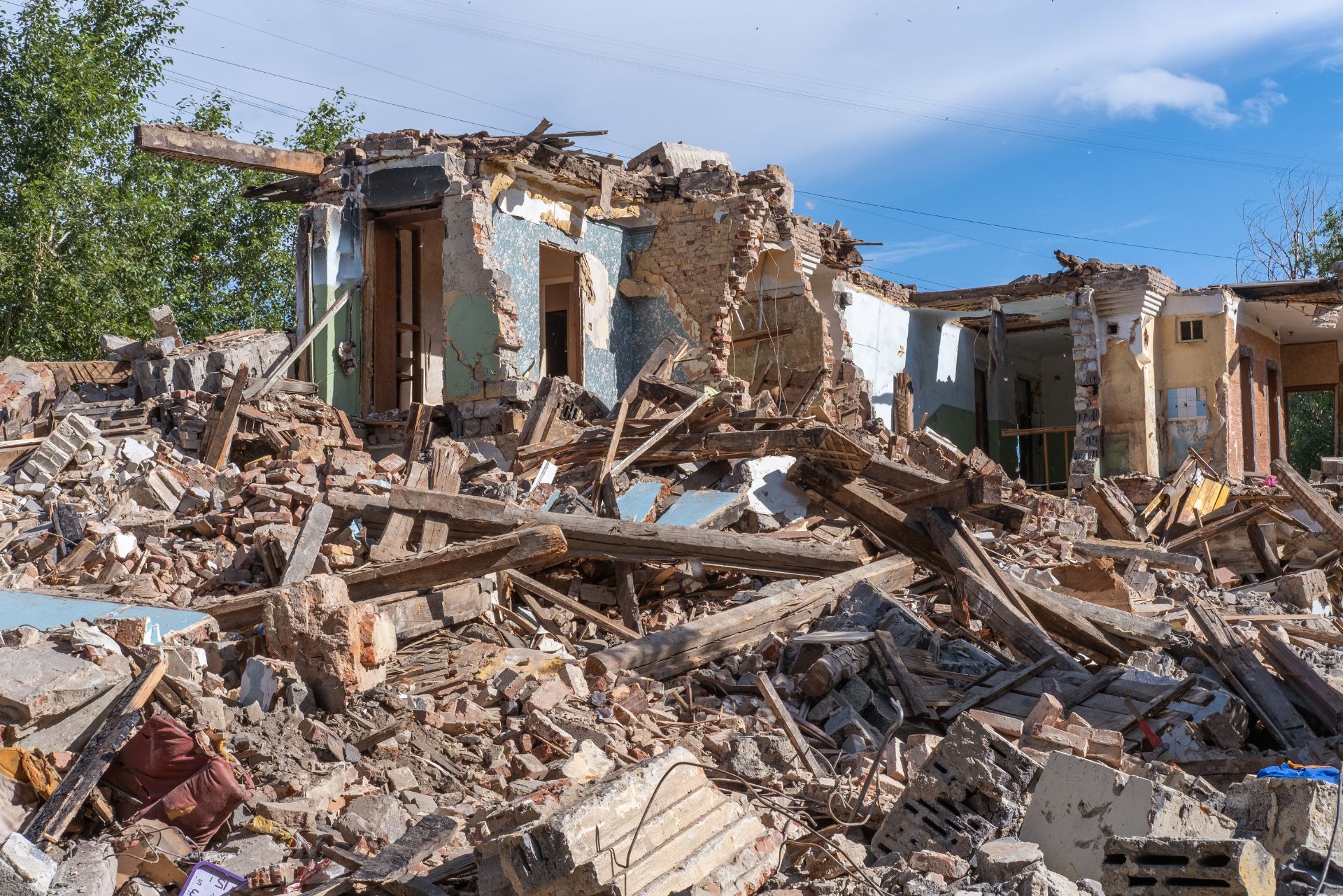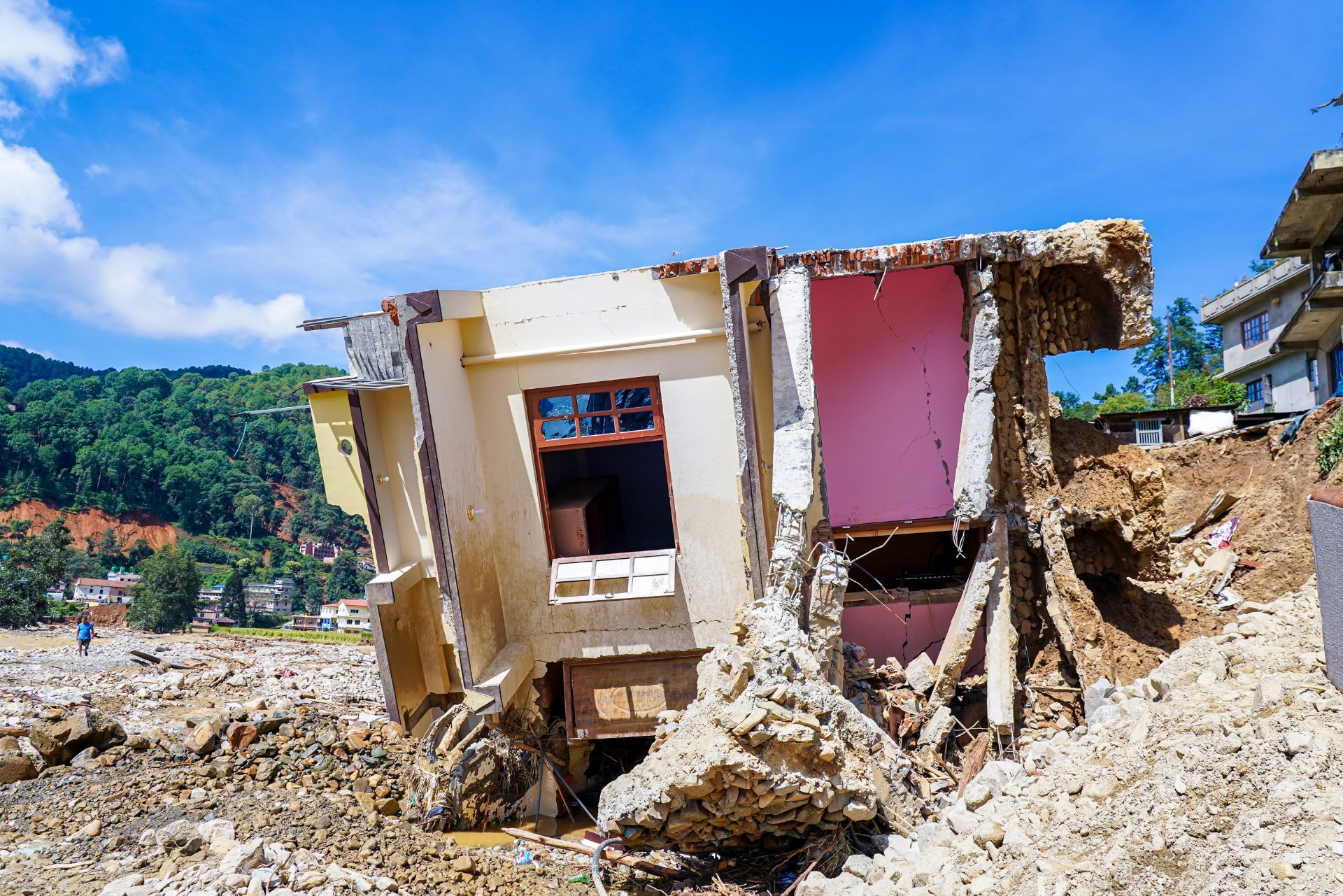Top 3 Recommended Policies

Earthquakes are often associated with states like California, but Colorado is not immune to seismic activity. In fact, the state has experienced significant earthquakes in the past, making earthquake insurance a crucial consideration for homeowners and businesses alike. This article explores everything you need to know about earthquake insurance in Colorado, including its importance, coverage details, and how to choose the right policy.
Understanding Earthquake Risks in Colorado
Colorado is situated near several fault lines, which can lead to unexpected seismic events. While the state does not experience earthquakes as frequently as some others, the potential for damage remains significant. Understanding the risks associated with earthquakes in Colorado is the first step in determining whether earthquake insurance is necessary.
Historical Context of Earthquakes in Colorado
Throughout its history, Colorado has experienced notable earthquakes. The most significant was the 1967 earthquake near the town of Rocky Mountain Arsenal, which registered a magnitude of 5.3. More recently, in 2011, a magnitude 5.3 quake occurred near Trinidad, highlighting that seismic activity can occur at any time.
These historical events serve as a reminder that while Colorado may not be the first state that comes to mind when thinking about earthquakes, the potential for damage exists. Homeowners should consider this risk when evaluating their insurance needs. Additionally, the state has seen smaller tremors that, while not causing significant damage, can still be alarming to residents. For instance, minor quakes have been recorded in areas like the San Luis Valley, which can serve as a wake-up call for communities to prepare for larger seismic events.
Geological Factors Contributing to Earthquakes
Colorado's complex geological structure contributes to its seismic activity. The state is characterized by a variety of rock formations, fault lines, and tectonic plate movements. The Rocky Mountains, for example, were formed by tectonic forces that continue to influence the region's stability.
Understanding these geological factors can help residents appreciate the likelihood of earthquakes in their area. Certain regions, especially those near known fault lines, may be more prone to seismic events, making earthquake insurance an essential consideration. Furthermore, the interplay between the ancient geological formations and modern human activities, such as mining and drilling, can exacerbate seismic risks. As these activities disturb the earth, they may inadvertently trigger minor quakes, underscoring the importance of being informed and prepared for potential seismic activity in the state.

What is Earthquake Insurance?
Earthquake insurance is a specialized type of property insurance designed to cover damage caused by earthquakes. Unlike standard homeowners’ insurance policies, which typically do not cover earthquake-related damages, earthquake insurance provides financial protection against the costs associated with repairing or rebuilding a home after an earthquake. This type of insurance is particularly important for homeowners living in seismically active regions, where the risk of significant earthquake damage is higher. With the increasing frequency of seismic events around the globe, many homeowners are recognizing the necessity of this coverage as a critical component of their overall risk management strategy.
Key Features of Earthquake Insurance Policies
Earthquake insurance policies vary by provider, but they generally include several key features. Most policies cover the following:
- Structural Damage: Coverage for damage to the home’s structure, including walls, roofs, and foundations.
- Personal Property: Protection for personal belongings, such as furniture, electronics, and clothing, that may be damaged during an earthquake.
- Additional Living Expenses: Coverage for temporary housing and living expenses if the home becomes uninhabitable due to earthquake damage.
In addition to these features, some policies may also offer optional endorsements that can enhance coverage. For instance, homeowners might choose to include coverage for specific high-value items, such as jewelry or artwork, which may not be fully covered under standard policies. Moreover, certain plans may provide coverage for retrofitting costs, allowing homeowners to strengthen their properties against future seismic events. This proactive approach not only helps in mitigating potential damage but can also lead to lower premiums over time.
Exclusions and Limitations
While earthquake insurance provides valuable coverage, it is essential to understand its limitations. Many policies exclude certain types of damage, such as:
- Flooding or water damage resulting from an earthquake.
- Wear and tear or maintenance-related issues.
- Damage to detached structures, like garages or sheds, unless specifically included in the policy.
It is crucial for policyholders to read the fine print and understand what is and isn’t covered to avoid surprises during the claims process. Additionally, many policies come with a deductible that can be significantly higher than standard insurance deductibles, often ranging from 10% to 20% of the insured value. This means that policyholders should be prepared for a substantial out-of-pocket expense before coverage kicks in. Understanding these nuances is vital for homeowners to ensure they have adequate protection and to make informed decisions about their insurance needs.
Do You Need Earthquake Insurance in Colorado?
The decision to purchase earthquake insurance depends on several factors, including location, property value, and personal financial circumstances. Here are some considerations to help determine if earthquake insurance is necessary.
Assessing Your Location
Areas closer to known fault lines or with a history of seismic activity may warrant earthquake insurance. Homeowners in cities like Colorado Springs or Denver should evaluate their risk based on local geological surveys and historical data.
Additionally, understanding the construction of your home can impact your decision. Older homes or those not built to modern seismic standards may be at a higher risk for significant damage during an earthquake. For instance, homes constructed before the 1980s often lack the reinforcements that newer buildings incorporate, making them more susceptible to structural failure in the event of seismic activity. Furthermore, local building codes can vary significantly, so it’s essential to consult with a local expert who can provide insights into your specific area’s regulations and risks.
Evaluating Property Value
The value of your property is another critical factor. High-value homes may require additional protection to cover potential repair costs. Earthquake insurance can help safeguard your investment, ensuring that you are not left with substantial out-of-pocket expenses in the event of a disaster.
Moreover, the cost of earthquake insurance can vary widely based on the assessed value of your home and the level of coverage you choose. It’s important to conduct a thorough analysis of your financial situation and weigh the potential costs of premiums against the possible expenses of repairs or rebuilding after an earthquake. Additionally, some insurance policies may not cover certain types of damage, such as that caused by landslides or flooding resulting from seismic activity, so reviewing the fine print is crucial to ensure comprehensive coverage that meets your needs.
How to Choose the Right Earthquake Insurance Policy
Choosing the right earthquake insurance policy requires careful consideration of several factors. Here are some tips to help navigate the selection process.
Research Different Providers
Not all insurance companies offer earthquake insurance, and those that do may have different coverage options and pricing. It is essential to research various providers, compare their policies, and read customer reviews to find a reputable company.
Look for insurers with a strong financial rating, as this indicates their ability to pay claims. Additionally, consider reaching out to local agents who understand the specific risks associated with Colorado. Local agents can provide insights into how frequently earthquakes occur in your area and what types of damage are most common, helping you make a more informed decision. Furthermore, some insurers may offer discounts for bundling earthquake insurance with other policies, so be sure to inquire about any potential savings.
Understand Coverage Limits and Deductibles
Earthquake insurance policies typically have coverage limits and deductibles that can significantly impact your financial protection. Review these carefully to ensure that the policy meets your needs.
Higher deductibles may lower your premium but can lead to substantial out-of-pocket costs in the event of a claim. Finding a balance between affordable premiums and adequate coverage is crucial. Additionally, consider what specific types of damage are covered under the policy. Some policies may cover the cost of repairs to your home, while others might also include personal property and additional living expenses if you need to temporarily relocate. Understanding these nuances can help you select a policy that offers comprehensive protection tailored to your situation.

Cost of Earthquake Insurance in Colorado
The cost of earthquake insurance can vary widely based on several factors, including location, property value, and the level of coverage selected. On average, homeowners in Colorado can expect to pay between 10% to 20% of their home’s value for earthquake insurance. This range reflects the unique geological characteristics of the state, where certain areas are more susceptible to seismic activity than others. Understanding these nuances is essential for homeowners considering this type of insurance, as it can significantly impact their financial security in the event of an earthquake.
Factors Influencing Premiums
Several factors can influence the cost of earthquake insurance premiums:
- Location: Homes located near fault lines may have higher premiums due to increased risk.
- Home Value: More expensive homes will generally incur higher premiums.
- Building Type: The construction materials and methods used in your home can affect risk assessment and, consequently, premiums.
Additionally, the age of the home plays a role; older homes may not meet current building codes designed to withstand seismic activity, which can lead to higher premiums. Furthermore, the local building codes and regulations in your area can also influence your insurance costs. Areas with stricter codes may see lower premiums, as homes built to higher standards are considered less risky.
Discounts and Savings Opportunities
Many insurance providers offer discounts that can help reduce the cost of earthquake insurance. These may include:
- Bundling policies, such as combining earthquake insurance with homeowners or auto insurance.
- Installing seismic retrofitting measures to strengthen your home against earthquakes.
- Maintaining a claims-free history with your insurer.
It is advisable to inquire about available discounts when obtaining quotes from different insurers. Some companies may also offer incentives for participating in earthquake preparedness programs or for completing safety audits of your home. These proactive measures not only enhance your home’s resilience but can also lead to substantial savings on your premiums, making it worthwhile to explore all available options.
Filing a Claim After an Earthquake
In the unfortunate event of an earthquake, knowing how to file a claim is essential for ensuring a smooth recovery process. Here’s a step-by-step guide to navigating the claims process.
Documenting Damage
After an earthquake, it is crucial to document all damage thoroughly. Take photographs and videos of the affected areas, and make a list of all damaged items, including their estimated value. This documentation will be vital when filing your claim.
Additionally, keep records of any repairs or temporary living arrangements, as these may be covered under your policy. It’s also advisable to note the date and time of the earthquake, as well as any relevant weather conditions that may have contributed to the damage. This comprehensive approach will provide your insurer with a clearer picture of the situation and may expedite the claims process.
Contacting Your Insurance Provider
Once you have documented the damage, contact your insurance provider as soon as possible to report the claim. Be prepared to provide your policy number, details of the damage, and any supporting documentation you have gathered.
Your insurer will guide you through the claims process, including any necessary inspections and assessments. During this time, it’s important to ask questions and clarify any uncertainties you may have about your coverage. Understanding the specifics of your policy, such as deductibles and limits on coverage, can help you manage your expectations and prepare for any out-of-pocket expenses. Additionally, inquire about the timeline for processing your claim, as this can vary significantly depending on the insurer and the extent of the damage across the affected area.
Preparing for an Earthquake: Mitigation Strategies
While earthquake insurance is an important safety net, taking proactive measures to mitigate damage can significantly reduce the impact of an earthquake. Here are some strategies to consider.
Seismic Retrofitting
Seismic retrofitting involves strengthening a home’s structure to better withstand seismic forces. This may include reinforcing foundations, securing walls, and installing flexible gas lines. Homeowners should consult with professionals to determine the best retrofitting measures for their property. Additionally, it’s crucial to assess the specific vulnerabilities of your home based on its age, design, and location. For instance, older homes built before modern building codes may require more extensive retrofitting to meet current safety standards. Investing in these upgrades not only enhances safety but can also increase the property’s value, making it a wise long-term investment.
Creating an Emergency Plan
Having an emergency plan in place can save lives during an earthquake. Families should establish a communication plan, designate safe meeting spots, and prepare emergency kits with essential supplies. Regular drills can help ensure that everyone knows what to do in the event of an earthquake. It's also beneficial to involve all family members in the planning process, including children, so they feel empowered and informed. Consider incorporating local resources, such as community centers or schools, as part of your meeting points. Furthermore, staying informed about local emergency services and evacuation routes can provide an added layer of preparedness, ensuring that your family can respond swiftly and effectively when an earthquake strikes.
Conclusion
Earthquake insurance is a vital consideration for homeowners and businesses in Colorado. Understanding the risks, coverage options, and costs associated with earthquake insurance can help individuals make informed decisions about their financial protection. By taking proactive measures to mitigate risks and preparing for potential earthquakes, residents can safeguard their homes and loved ones against the unpredictable nature of seismic events.
Ultimately, investing in earthquake insurance can provide peace of mind, knowing that you are taking steps to protect your property and financial future in the event of an earthquake.
Contact Us
Phone
Location

